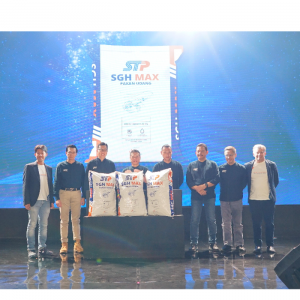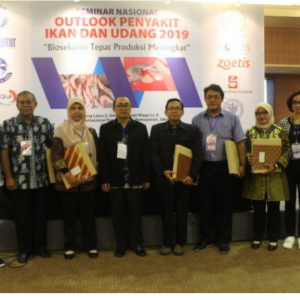
Rediscovering Remedies: New Methods For Treating Velvet Disease
| Mon, 29 Jul 2019 - 11:30
As EU countries consider banning many chemical therapeutants used in fish farming, researchers suggest using humic substances and hydrogen peroxide as sustainable and environmentally friendly treatments for parasitic diseases.
In a recent article in Reviews in Aquaculture, researchers have compared multiple treatments for velvet disease, a parasitic infection that impacts both freshwater and marine finfish. The review lays out the risks and benefits of existing treatments for velvet disease and explores the new treatment options that could replace chemical-based therapies. Though they overwhelmingly concluded that additional research was needed to determine the best treatment for parasitic diseases, the researchers suggested that hydrogen peroxide and peracetic could be used as therapeutants that will not leave environmental residues. They also proposed utilising feed supplements (like pre- and probiotics) to reduce biological stress in fish. The review also highlighted the utility of humic substances (major components of natural organic matter) as natural immunostimulants.
Background
Velvet disease, also known as rust or gold rust disease, is a parasitic infection that impacts warm-water fish. The parasite weakens the immune system and causes skin damage. It also leaves the fish susceptible to secondary infections. Since the EU’s regulatory frameworks governing disease treatments in aquaculture are expected to change, there is an urgent need for alternative therapeutants. Currently, treatments for velvet disease and other parasitic infections contain copper, malachite green or methylene blue – all of which can be toxic to other organisms in the surrounding environment. These treatments also leave residues in the water after they are used. An additional concern regarding the use of chemical treatments is that over time, the target parasites become resistant to them.
Acknowledging the trade-offs
The researchers found that hydrogen peroxide and peracetic acid degrade into harmless residues and could be classed as environmentally friendly. Current literature has demonstrated that the substances can treat various pathogens, including parasites. However, since they have a high oxidative capacity, their use could add to the stress levels of infected fish – making it less effective as a treatment.
Dietary supplementation with vitamins and biotics can reduce stress levels and make fish less susceptible to infections. However, there is a risk of over-supplementation. The researchers concluded that more studies needed to be conducted. Additional research would indicate the best method and dosage needed for dietary supplements to be effective in preventing and treating velvet disease. The researchers found humic substances promising. Current studies into the compounds have demonstrated that they improve growth, vitality, lifespan and food conversion rates in farmed fish. Research has also indicated that they increase overall immune health and could therefore make fish less susceptible to velvet disease. However, studies are still in their preliminary and pilot stages, so humic supplementation should not be viewed as a magic bullet in disease treatment.
Recommendations
In general, the researchers recommended concentrating on two aspects of disease prevention : Treat the invading parasite with a naturally-occurring substance, or one that doesn’t leave a residue in the environment. Make the fish less susceptible to parasites through dietary and environmental fortification
Source : The Fish Site






















